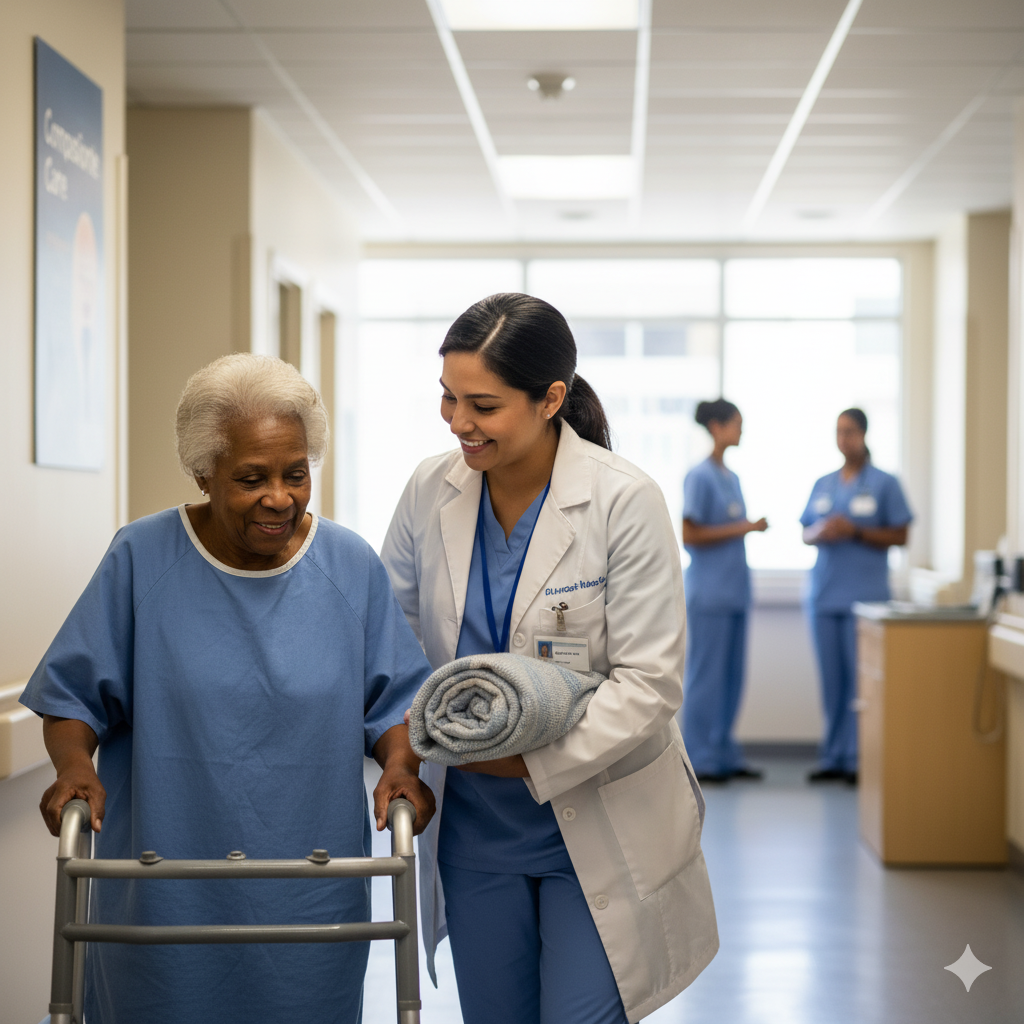Here To Help
The NHS is endeavouring to find ways to reduce the number of people having to travel to hospitals for appointments; this is even more so since the recent pandemic. Reducing the number of people attending a hospital, it is possible to reduce infections for patients within the hospital, as well as reducing outpatients form acquiring an infection whilst visiting a hospital. Alongside this, with the stresses of modern-day life, many people find it inconvenient and time consuming to visit a hospital, especially for simple procedures, that could see them waiting in the hospital for an extended period of time waiting to be seen. There are also patients with limited access to means of transport that find travelling to hospitals time consuming and in some cases costly.
A recent case study in Northumbria, on GP x-ray referrals found that the average age of a patient being referred to the hospital by the GP for an x-ray was 82 years old. For most 82-year-olds, getting to the hospital is not a simple task, many do not drive at this age and would rely on public transport, a patient services ambulance or friends and family. When in hospital an 82-year-old is at an increased risk of getting a hospital acquired infection, add to this if a family member or friend has taken them to the hospital, this person will likely be sat in the waiting room with them, who is also at a risk of gaining a hospital acquired infection or possibly be the source of passing on an infection to others in the hospital. It is for this reason that the NHS is currently trying to find ways to prevent people from attending the hospital apart from those with the most urgent need to do so.
This is where RADray can help. By providing x-ray imaging in a location that is close to the patient’s home and in cases where travel is not an option for the patient, these services can even be provided in the comfort of the patient’s own home. With our online booking services, once a patient has been given a referral for an x-ray, they are able to book an appointment at a location that is convenient for them at a time to suit them and for patients that do not wish to use online features, there is the option to call RADray to make the same appointment. GP surgeries are far more common than hospitals and are generally in close proximity to the patient’s house, making travel easier for the patient. By giving patients appointment slots, we are able to reduce the length of time the patient has to wait for their procedure; we also have the ability to provide ad hoc appointments. Should a patient be seen by the GP and RADray are in the surgery or a surgery nearby, the GP would be able to refer the patient for a same day x-ray, saving the patient time and enabling them to start treatment sooner.
The staff at RADray have all been “Red Dot” trained, allowing them to give the referring clinician an instant prognosis, allowing them to start treatment earlier and enable to the patient to recover quicker. With our contract for reporting, we are able to guarantee that all x-rays have a full and final diagnosis available for the referring doctor within 48 hours of the patient attending their appointment.
Through several freedom of information requests, 13 NHS Trusts were contacted in the North-West, covering a total of 36 hospitals. For the year 2022, these hospitals caried out a total of 1,024,242 GP x-rays, that could be carried out by RADray. Of this number only 152801 results were made available to the GP in under 48 hours, equating to just under 15% of patients x-rayed. RADray has the capacity to x-ray and report all of the patients seen by the company within 48 hours of the patient attending their appointment. With any illness, the quicker treatment can be started, the better the outcome is for the patient, the patient returns to health quicker and the patient has a better experience of the healthcare system.
Across these hospitals, approximately 800 patients required a Patient Transfer Services ambulance to take them to hospital for their x-ray. The NHS Report of the non-emergency patient transport review from 2021, estimates that each journey costs the NHS on average £38, this is for a one-way journey, doubling that cost when a return journey to the patient’s home is included, meaning the just looking at these 13 NHS trusts, approximately £60k was spent just on Patient Transfer Services ambulances, to get patients to and from their x-ray procedure. On top of this, patients using these ambulance services are often given a low priority for their return trip, meaning that it is not uncommon for patients to be waiting for several hours after their procedure to return home. RADray can overcome this by taking the x-ray equipment to the patient’s home, meaning the patient does not have to wait for an ambulance to take them to the hospital or to return them back to their house, improving the service to these patients. By taking the x-ray equipment to the house we can significantly reduce the cost the NHS is spending on non-urgent ambulance transfers for GP requested x-rays.
